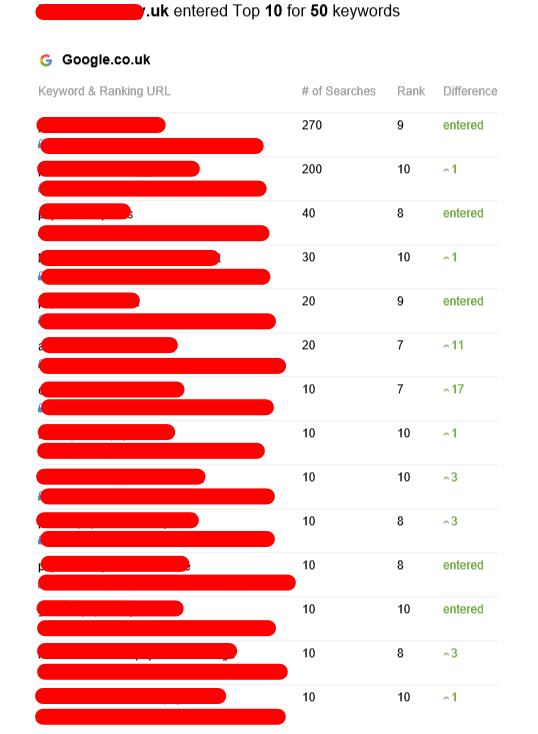Backlink Tier - The Hierarchy of Backlinks That Scale Your SEO Campaign
The Backlink tier is the structure of backlinks you create to scale your SEO campaign. Each level adds an additional layer of protection against Google's penalties.
In order to get it right, you'll need to spend an enormous amount of effort and time. This is because Google takes weeks to find new backlinks, and then evaluate their quality on a per-link basis.
First-Tier Links
These links should be of high quality and dofollow from trusted websites. These links are called Tier 1 backlinks and act as the base of your link building strategy. They give your website enough authority in the domain for it to rank highly on the search engine result pages. For instance, if your blog article was published on HubSpot and also included a tier-one link to SearchEngineLand’s compilation of Link Building Statistics then SearchEngineLand’s web page rankings will benefit from the link equity HubSpot transferred to SearchEngineLand.

The second tier can be a little more diverse, and they can include low-quality hyperlinks, such as spammy forum posts or low-quality bookmarking websites and directories. The primary objective of Tier 2 is to create high-quality content that links back to your first-tier backlinks. This is because quality content will enrich the article it is placed in, and not make it stand out as a unique addition for SEO purposes.
To create an effective tiered campaign, you'll have to invest in high-quality materials and tools such as RankerX or GSA. However the time and money that is spent manually executing the tiered link building process could be worth it in terms of the rankings that result from having a properly structured backlink pyramid.
Second-Tier Links
Tiered link building is designed for users to navigate external pages and eventually get to your website. To make this work it's essential to select second-tier backlink sources that are relevant to your industry and site. Contrary to profile profiles, guest blog posts perform well in this regard because they provide useful content that users would like to consume.
In general, avoid using tier 2 links in forums or other low-quality sites. Instead, use high-quality pages, such as industry news or guest articles. These links appear more natural and have a greater effect on your search engine's ranking. Additionally, they're more likely to be recognized by Google as having passed link equity, which will increase their rank in SERPs.
If you're planning to create tier 2 links with the intention of improving your SEO rankings You must be aware that it's difficult to get these types of quality backlinks manually. It can take months to submit guest blog posts to first-tier publishers and even longer to wait for them to be published. It can also take weeks to see the results when it comes time to create new traffic and converts onsite.
Alternatively, many SEOs turn to automated tools to help them create links for second-tier sites. But, this method could violate Google's Webmaster guidelines and could result in penalties.
Third-Tier Links
This category has a large amount of links, some that are borderline spammy. They are published on social media platforms and on websites that allow user-generated content like Quora. They are used to index links of tier two but do not pass link equity on to the resource being promoted. They are typically nofollow links. At this stage, marketers are more focused on quantity than quality. They employ tools to publish numerous links on forums, in comment sections of articles, blog posts, in directories, and in other similar locations. This is where tiered link building becomes a gray area and violates Google's webmaster guidelines.
Link-building campaigns that are categorized require a lot of time and effort to be successful. It could take days or even a month to get Google to crawl one backlink, and then it could take weeks or even months to observe a significant impact on SEO. Marketers must be patient and use a carefully-planned content strategy.
Marketers should be cautious about using excessively automated tools for this type of linking. These tools could be in violation of the rules of search engine optimization and lead to penalties. It is preferential to manually select links and place them on relevant donor websites instead of using automated services like GSA or RankerX. This will stop the search engine from penalizing a promotion with links that aren't of good quality.
Fourth-Tier Links
Tiered link building is still an effective method to improve the rankings of websites. However tier 3 backlinks is now that Google has taken significant steps to eliminate "black black" SEO practices, tiered linking methods have suffered a blow.
They are considered gray-hat SEO techniques and can be punished for their deliberate use. Tiered links are backlinks created on various levels of a pyramid. The primary function of these backlinks is to improve the rank of a promoted site in search engine results. This means that the promoted page can rank higher than rivals and gain more organic traffic.
The quality of the backlinks in this tier goes an eminent decline and are usually nofollow. In addition the tier can be composed of low-quality social directories, media profiles, and article networks. Links can be generated naturally or using automated strategies, but they must be varied in terms of the domains, niches, and relevance.
In addition to their low-quality, nofollow nature these backlinks can create problems if they're not sufficiently diverse. This is due to the fact that Google has a sophisticated group of hound dogs who are constantly looking for patterns in backlink profiles and strategies. If they find them not only can the link-building group be penalized, however, so too can its clients.
